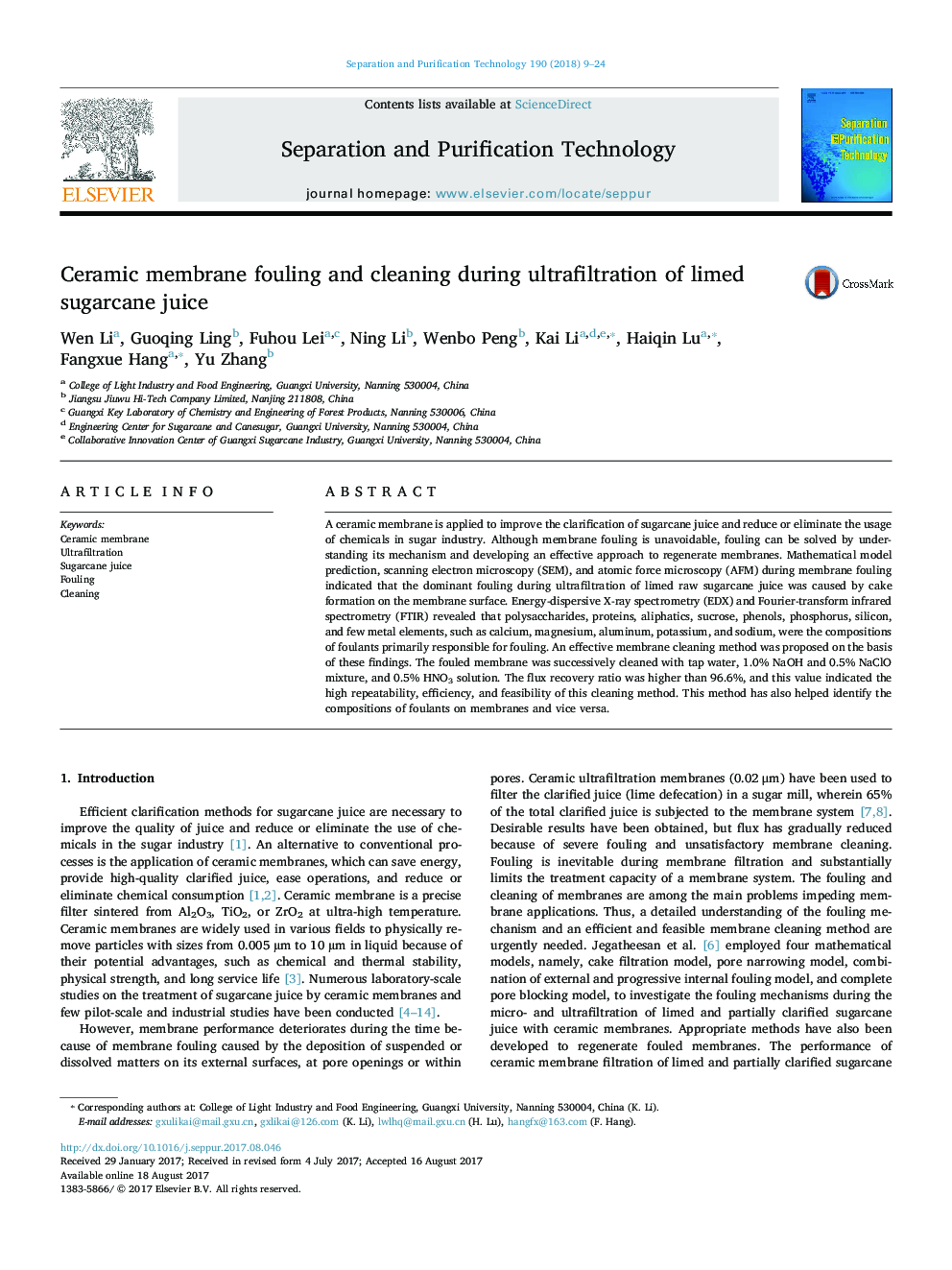| Article ID | Journal | Published Year | Pages | File Type |
|---|---|---|---|---|
| 4989466 | Separation and Purification Technology | 2018 | 16 Pages |
â¢Foundation of ceramic UF membrane in the treatment of sugarcane juice.â¢Membrane fouling was investigated combination of model prediction, SEM and AFM.â¢Compositions of the foulants were investigated by EDX and FTIR.â¢Propose an effective cleaning method with a flux recovery ratio higher than 96.6%.
A ceramic membrane is applied to improve the clarification of sugarcane juice and reduce or eliminate the usage of chemicals in sugar industry. Although membrane fouling is unavoidable, fouling can be solved by understanding its mechanism and developing an effective approach to regenerate membranes. Mathematical model prediction, scanning electron microscopy (SEM), and atomic force microscopy (AFM) during membrane fouling indicated that the dominant fouling during ultrafiltration of limed raw sugarcane juice was caused by cake formation on the membrane surface. Energy-dispersive X-ray spectrometry (EDX) and Fourier-transform infrared spectrometry (FTIR) revealed that polysaccharides, proteins, aliphatics, sucrose, phenols, phosphorus, silicon, and few metal elements, such as calcium, magnesium, aluminum, potassium, and sodium, were the compositions of foulants primarily responsible for fouling. An effective membrane cleaning method was proposed on the basis of these findings. The fouled membrane was successively cleaned with tap water, 1.0% NaOH and 0.5% NaClO mixture, and 0.5% HNO3 solution. The flux recovery ratio was higher than 96.6%, and this value indicated the high repeatability, efficiency, and feasibility of this cleaning method. This method has also helped identify the compositions of foulants on membranes and vice versa.
